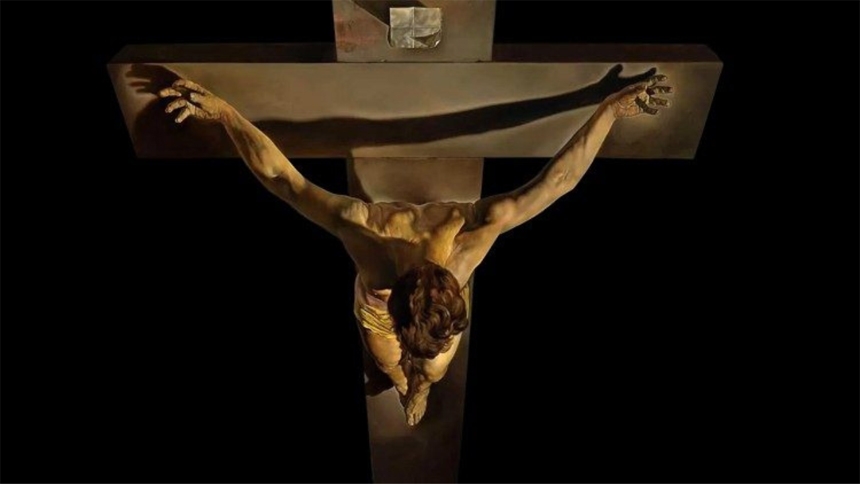
This is one of the most striking representations of Christ: Jesus on the cross, with his face hidden, looking down. The image shows no signs of suffering. Neither are there the symbols of the Passion: no wounds, no nails, no crown of thorns. It's only the figure of the Lord in the middle of a dark sky that opens to the sea, where two fishermen are working. This is what the Spanish painter Salvador Dalí wanted to represent. But his inspiration for this painting cannot be understood without seeing this small piece of paper: a relic of St. John of the Cross that moved the artist.
FR. ALESSIO GERETTI
Director, Jubilee Art Events 2025
The idea for this Christ was born after Dalí visited Avila in late December 1948, when, upon entering the Monastery of the Incarnation, Carmelite nuns showed him the small drawing made by the Carmelite mystic John of the Cross in 1572, after an ecstatic vision he had received from God.
For the first time in history, the drawing and the painting will be on display together. One initiative ahead of the Jubilee is to bring religious art closer to the Roman locals and to tourists from all over the world.
If someone looks closely at the painting, they will notice a small detail. In the background, there are mountains that contrast with the surrounding landscape. And the peaks form a unique profile: Dalí's face.
FR. ALESSIO GERETTI
Director, Jubilee Art Events 2025
There is an obvious mistake because there is a very irregular and uneven mountain formation, which he puts there on the horizon. Really, Dalí is not there. Actually, it is the profile of the artist who, as if he were lying down looking at Christ, wanted to inscribe himself within the painting to pay his personal homage to the Lord who was revealing himself interiorly to Dalí at that moment in his life.
This Dalí exhibition was inaugurated on May 13 and will be in Rome until June 23. It is estimated that more than 300,000 pilgrims will have passed through this space in Rome to visit these images of Christ, both with a Spanish origin.

